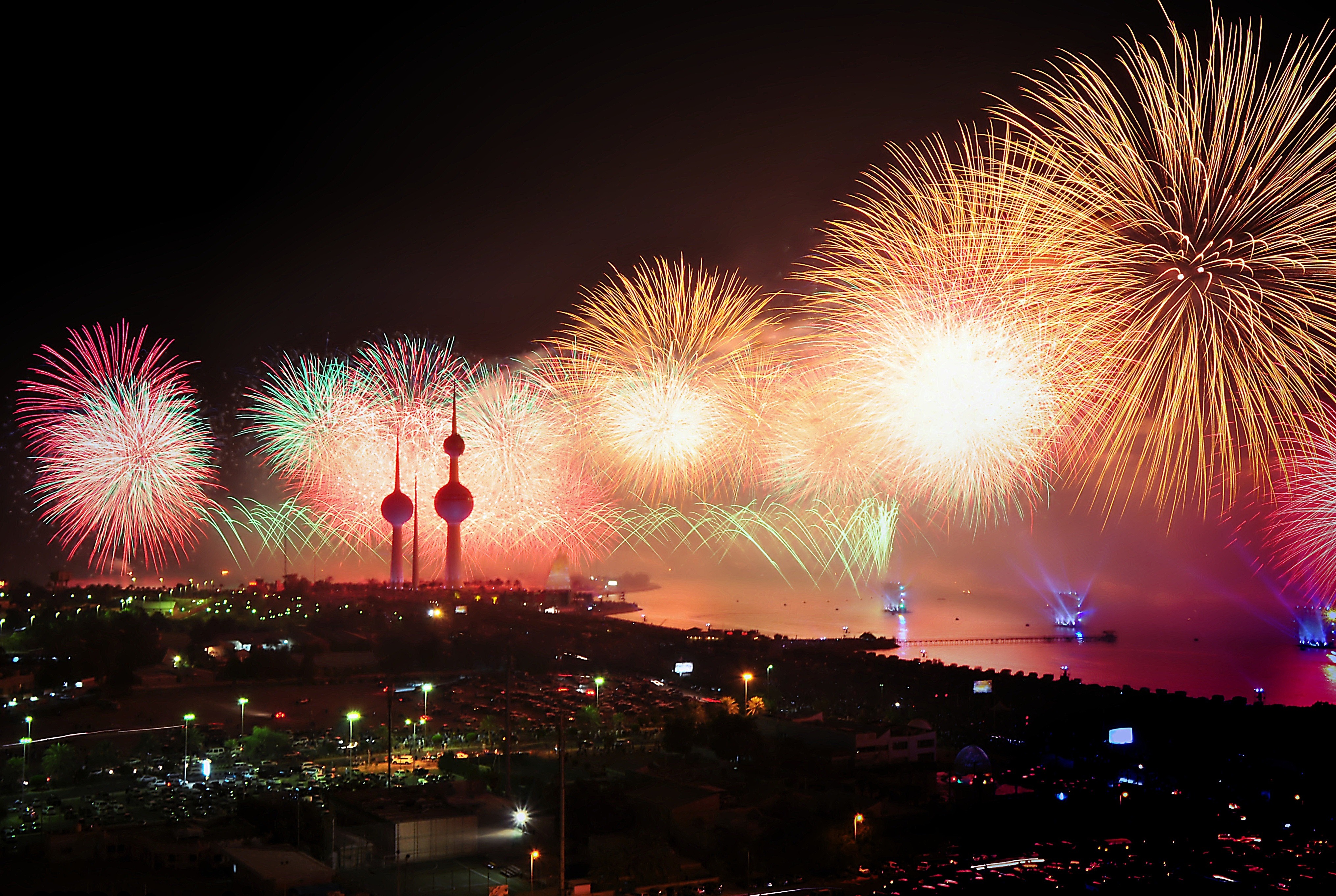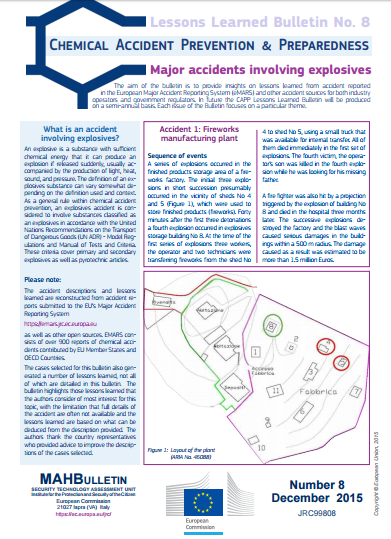Explosives and fireworks sites
|

|
An explosive is a substance with sufficient chemical energy that it can produce an explosion if released suddenly, usually ac- companied by the production of light, heat, sound, and pressure. The definition of an explosive substance can vary somewhat depending on the definition used and context. As a general rule within chemical accident prevention, an explosives accident is con- sidered to involve substances classified as an explosives in accordance with the United Nations Recommendations on the Transport of Dangerous Goods (UN ADR) - Model Regulations and Manual of Tests and Criteria. These criteria cover primary and secondary explosives as well as pyrotechnic articles.
Although explosives have been used since ancient times, the modern explosives industry had its beginnings in the 19th century when black powder was used to mine for minerals, break rock, clear fields and make roads. In the 1860s, Alfred Nobel, a Swede, invented dynamite and the blasting cap required to make it explode. This invention played a key role in launching the explosives industry and the industrial revolutions of western Europe and North America.
|
The new explosives gave the mining industry a far greater capacity to mine such valuable metals as copper, coal and iron ore at a substantial profit. The wide availability of these metals allowed new industries, including production of new and better modes of transport and machinery, to thrive. The later invention of dyanmite accelerated production and growth in such industries as oil and gas exploration, power production, mineral mining and pipeline, tunnel and highway construction.
Fireworks are thought to have come into being with the invention of gunpowder by the Chinese between 600 and 900 A.D. By the 13th century, the technology had also been adopted in Europe and Arabia to create splendid displays for festive occasions but also to produce firearms for the military. Concern about the safety risks associated with production and use of fireworks emerged in the 19th century at which time some countries began to introduce restrictions.
In principle, explosives can be activated by a number of different types of energetic stimuli2. For production and storage accidents, the most relevant are:
- impact/friction
- fire/heat
- electrostatic discharge
- runaway reaction during explosives manufacture
There are usually a number of serious accidents in fireworks and explosive sites reported by the media around the world every year. Often operated by small businesses, these facilities often experience severe consequences from accidents, including substantial casualties and property damage, and even destruction of the entire business entity.
|
|
 |
- Pyrotechnic and Explosive Substances in the Context of the Seveso II Directive
- This document presents results of the EU workshop following the Enschede fireworks disaster of 20 May 2000. Recommendations from this workshop were incorporated into the classification thresholds of the Seveso Directive and also are refelected in the Directive on the internal market for pyrotechnic articles (2013/29/EU).
|
 |
| |
|

